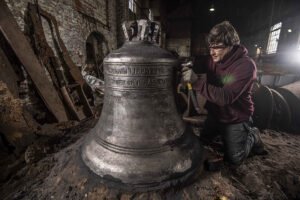Metals Used in Traditional Bell Casting
There is an unmistakable resonance that emanates from the ringing of a church bell. It’s melodious and lasting vibrations result from thousands of years of refinement. The earliest of large bells were cast in China from iron because of its abundance in the region. Cast iron is one of the hardest metals, and this makes it difficult to finish or tune.
With the advent of the Renaissance, European bell makers began to experiment with the shape of bells and the tone they produced. This experimentation involved the use of different metal components and removal of impurities from the composition until the discovery of a bell metal mix that is still in use today.

The most commonly used bell metal used today is made up of 70% copper and 30% tin. Though these metals individually are soft and malleable, their combination creates a sturdy and lasting alloy that resists oxidation and weathering and produces a distinct vibration. This metal also resists cracking from repeated strikes. This most important characteristic of bell metal is its lengthy resonance. The sound results directly from the chemical forces that bind tin and cooper that vibrate when struck. While copper is the dominant metal used in bell casting, tin plays a pivotal role in the unique sound of bell ringing. Tin has a very low dampening quality. This allows the metal to resonate for a longer length of time.

Here at the McShane Bell Company, our bells are cast with precisely calculated metal composition. We’ve mastered bell casting to produce bells with glorious tones that last for centuries. Looking for the perfect church bells for sale? Start your bell project today by calling (410) 636-4390!




